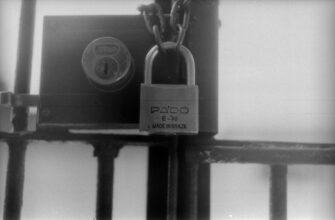What Is Air-Gapped Security and Why Your Accounts Need It
In today’s threat landscape where cyberattacks surge by 38% annually, air-gapped security offers an impenetrable fortress for your most critical accounts. An air-gapped system is physically isolated from unsecured networks—no internet, Bluetooth, or wireless connections. This creates a “digital moat” that blocks remote hackers, malware, and phishing attempts. Financial institutions, government agencies, and crypto holders increasingly rely on this approach to guard high-value accounts against evolving threats like credential stuffing and supply chain attacks.
Core Benefits of Air-Gapping for Account Protection
- Zero Remote Exploits: Eliminates attack vectors from hackers thousands of miles away
- Malware Immunity: Prevents ransomware/keyloggers from reaching isolated systems
- Physical Access Requirement: Forces attackers to be physically present to compromise data
- Regulatory Compliance: Meets strict standards like NIST 800-53 for sensitive data
Step-by-Step: How to Guard Your Account with Air-Gapped Security
- Identify Critical Accounts
Prioritize accounts with irreversible actions (e.g., crypto wallets, admin panels) or sensitive data (banking, email recovery). - Establish the Air-Gapped Environment
Use a dedicated device (old laptop/Raspberry Pi) with no Wi-Fi/BT hardware. Physically remove wireless cards if present. - Create Offline Signing Mechanisms
Install air-gapped signing tools like ColdCard (crypto) or Tails OS. Generate keys/credentials ONLY on this device. - Implement Data Transfer Protocols
Use QR codes or USB drives (scanned for malware on intermediate device) to move transaction data. Never connect directly to online systems. - Secure Physical Access
Store devices in locked safes with tamper-evident seals. Restrict location access to authorized personnel only. - Enable Multi-Factor Authentication (MFA)
Combine air-gapped keys with hardware tokens like YubiKey for transaction approvals.
Air-Gapped Maintenance Best Practices
- Update software monthly using verified offline packages
- Conduct quarterly tamper checks on hardware
- Use encrypted USBs with self-destruct mechanisms after failed access attempts
- Maintain a geographically separate backup device
- Destroy storage media via degaussing/physical shredding after decommissioning
Air-Gapped Security FAQ
Q: Can air-gapped systems be hacked?
A: Only via physical access or compromised data transfers. Our step-by-step protocols mitigate these risks through encryption and access controls.
Q: Is this practical for everyday accounts?
A: Reserve it for high-value accounts. For standard logins, use hardware keys + password managers.
Q: How often should I update air-gapped software?
A: Monthly, using checksum-verified packages from trusted sources via isolated transfer methods.
Q: What’s the biggest operational risk?
A: Human error in data transfer. Always verify transaction details on air-gapped devices before signing.
Q: Can I use a virtual machine instead?
A> No. VMs share hardware vulnerabilities. True air-gapping requires physical isolation.
Fortify Your Digital Fortress Today
While air-gapping demands rigorous discipline, its unmatched security makes it essential for guarding crown-jewel accounts. By following this step-by-step guide, you create a virtually unhackable environment where attackers face insurmountable physical barriers. In an era of sophisticated cyber warfare, air-gapped security isn’t overkill—it’s survival.








